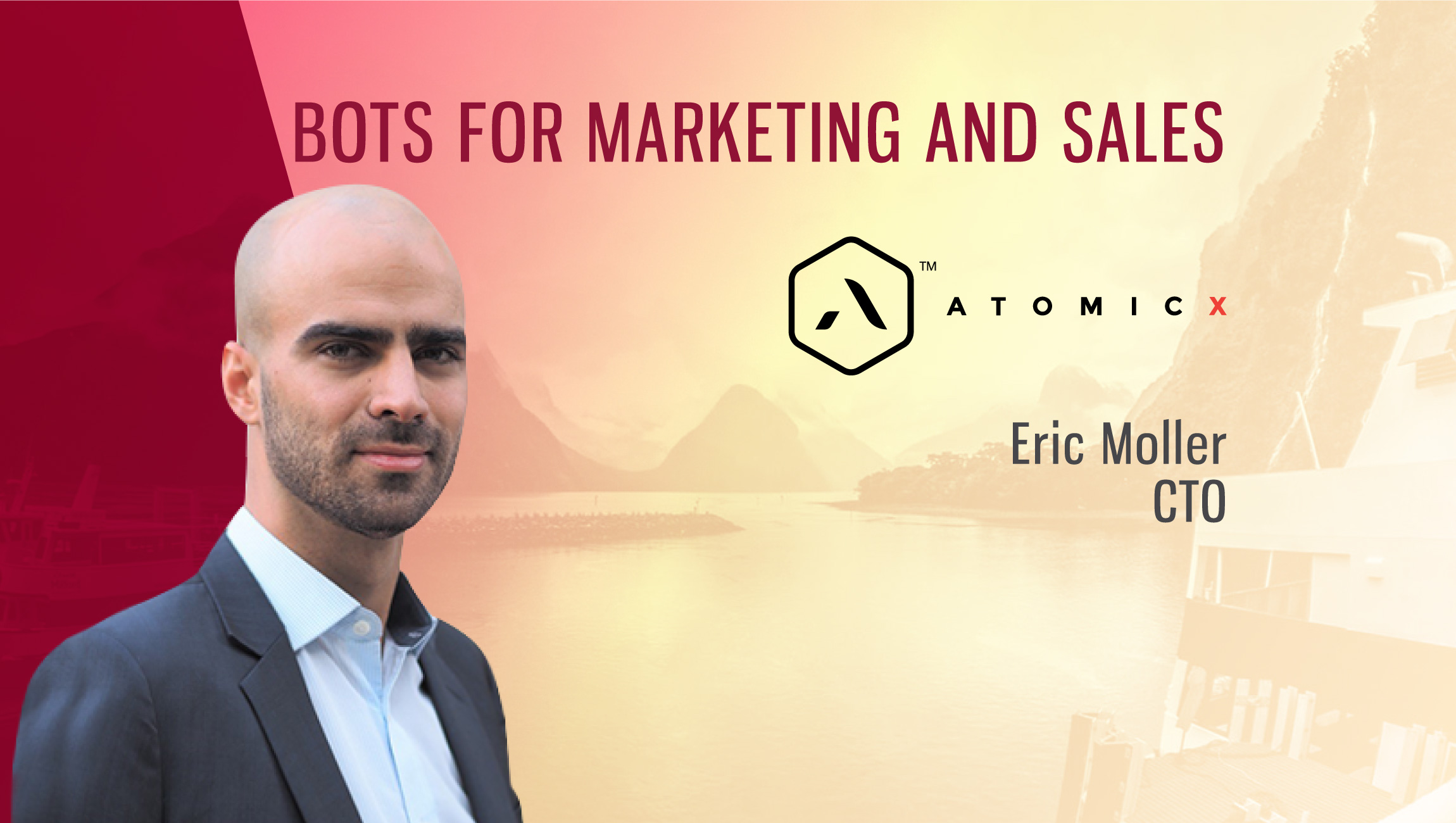Eric Moller
Chief Technology Officer, Atomic X
Atomic X recently launched a chatbot for marketing and sales – Rufus. Chatbots for marketing and sales are certain to rule the roost in the years to come. Thanks to their increased productivity and value-added communications, chatbots and virtual assistants can reduce the friction in business-to-user interactions. To better understand the state of chatbot automation in sales and marketing, we spoke to Eric Moller, Chief Technology Officer, Atomic X.
Html code here! Replace this with any non empty text and that's it.
Tell us about your role at Atomic X and the team/technology you handle.
As the CTO at Atomic X, my current focus is to set a strategic direction for our product and technology. I’m also making sure we’re able to deliver that on time and on budget.
We have a team of world-class designers and developers who are incredibly talented; they’re really able to make anything happen. With a team like this, my role is to make sure we’re all working towards the same goal. There’s a lot of tempting features and technology we’d love to explore, but we need to stay true to our mission right now.
Define the role of Chatbots for Marketing and Sales in 2018?
It’s hard to define exactly what that is because it’s changing so quickly right now. We’re at a stage in the technology hype cycle where lots of folks are really just trying ideas out to see if they stick.
The role I see is very specific: reduce friction. Nobody wants to talk with some fictitious AI persona who’s asking them how their day is going. People use chatbots, and in fact, many online services, to get something done. I would encourage any company implementing a chatbot to think about what that thing is and make it really easy to do. The “blab-bots” that serve only to ask open-ended questions and try to be your “digital friend” aren’t going to be around too long.
How are you competing against the established bot makers?
For the most part, I see a lot of:
- Bot building tools, with a lot of big players here; think IBM, Google, Facebook, etc.
- People leveraging the bot building tools. Many of these are small independent developers who are capitalizing on the freely available tools and deploying bots to Messenger or as Alexa skills.
We’ve built our entire technology stack in such a way that we can install it on-premise and have complete control over the encryption and data security on the back-end. It’s much harder to build good bots when you can’t leverage free Google APIs, but that’s exactly what we’re doing. Big players, such as banks and insurance companies, stand to make huge gains by implementing chatbots into their processes. They also can’t afford to take risks with their sensitive client data, and that’s where we come in.
Atomic X also has killer design and UX. If you want to reduce customer friction – good design is step 1.
Which segment of customers are you targeting with Rufus? How would chatbot automation ensure better customer journey analytics?
Ultimately, any customer looking for a transaction is going to be in our wheelhouse. I don’t just mean a financial transaction, but really anything. If a customer is looking for specific information, we want to make that easy. If they’re looking for a particular product or item, that’s what we do.
The beautiful thing about chatbots is if you want to know what your customer wants, you can just ask them. We’re developing proprietary technology that allows us to dynamically sort customer questions and comments – which makes it trivial to see where your processes are not meeting customer expectation.
For example, we might detect a pattern where the customer becomes angrier, or less patient, after being delivered certain content or information – that’s a sign that the current answers are not meeting customer expectations. A well-designed bot can really reduce an organization’s customer-facing blind spots.
How critical is it to distinguish customer experiences in B2B purchasing cycle? What role would your bots play?
That’s a tough space. B2B sales cycles vary by a huge amount. Bots do really well in a space where there’s a lot of volume, and hence, lots of training data. If you have long, slow sales cycles, you really won’t get too much training data, or opportunities to leverage the efficiencies a bot creates.
If we’re talking about high-volume B2B sales, I could see bots being useful. The pace of adoption and technological innovation will be in the B2C space.
What technologies in AI/machine learning are you deploying to make bot adoption agile?
We’re using deep learning algorithms to improve our classification and emotion recognition patterns. I don’t want to go into detail and give away our secret sauce, but in general we use AI to do two things very well:
- Leverage a companies’ existing data and processes to improve the bot experience.
- Create pipelines where each subsequent bot interaction helps train the bot, without exposing our models to coordinated attacks.
Thanks for chatting with us, Eric.
Stay tuned for more insights on marketing technologies. To participate in our Tech Bytes program, email us at news@martechseries-67ee47.ingress-bonde.easywp.com







Comments are closed.